How to Prepare
Preparing lobsters can be very easy if the right steps are taken, let’s try it at home.
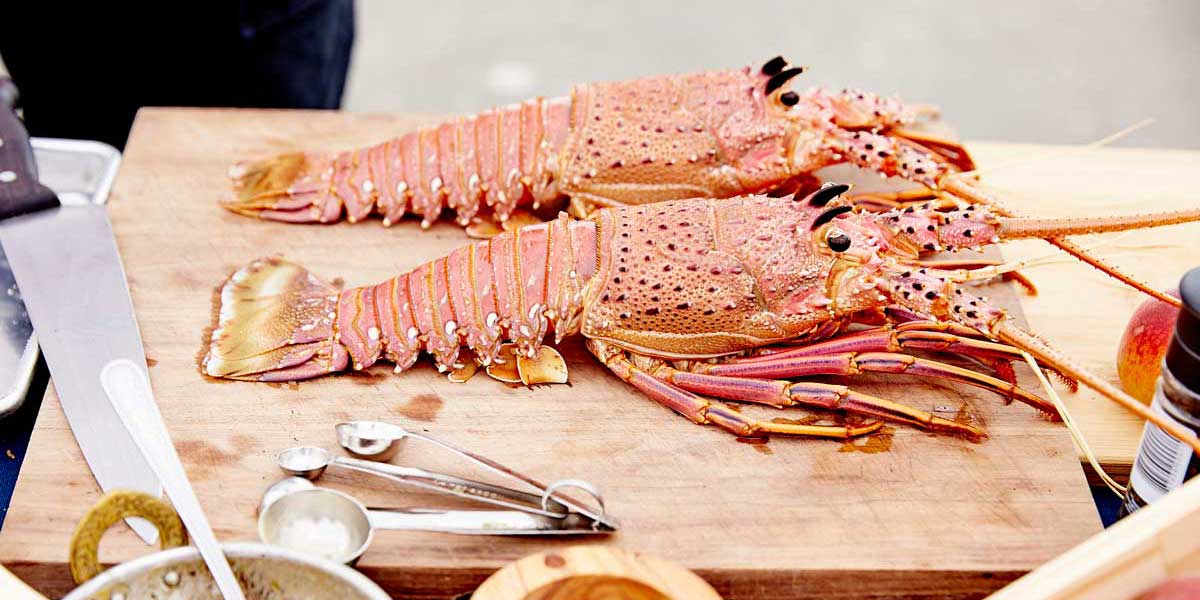
Preparing lobsters can be very easy if the right steps are taken, let’s try it at home.
How to prepare a lobster might seem a daunting task for many Chinese people if they haven’t done it before. But this shouldn’t put off people from cooking lobsters at home.
Brolos Lobsters has created below the three ‘how to’ – step-by-step guides to make preparing lobsters at home easier than ever.
Step 1: How to chill or euthanise your lobster
Step 2: De-netting
Step 3: How to take meat out
After this, you can start making your favourite Brolos lobster dishes with your own recipes, or reference our recipes.

Your Brolos lobster will be delivered fresh and alive to your home.
Brolos recommends that you leave the lobster in the netting/ packaging and chill in the fridge for at least 15 minutes before starting your preparation.
Alternatively you can chill the lobster in its netting by using ice and cold water with sea salt added in the kitchen sink – again for at least 15 minutes before you begin preparation.
Chilling is the humane way to slow down the metabolism and euthanize the lobster. This minimizes any messy handling or the chance of injury from the lobster. Once you have chilled the lobster – you can remove from the netting.
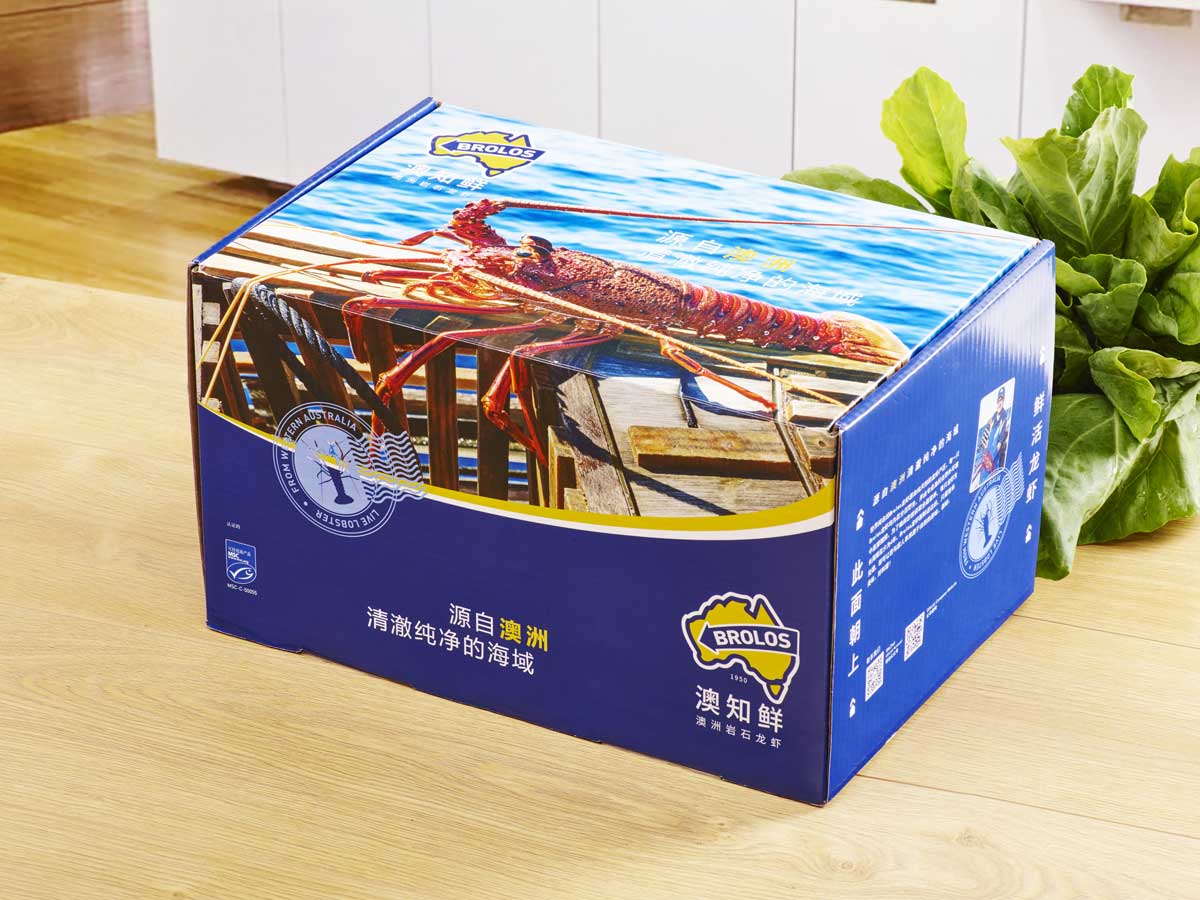
Your Brolos lobster will be delivered fresh and alive to your home.
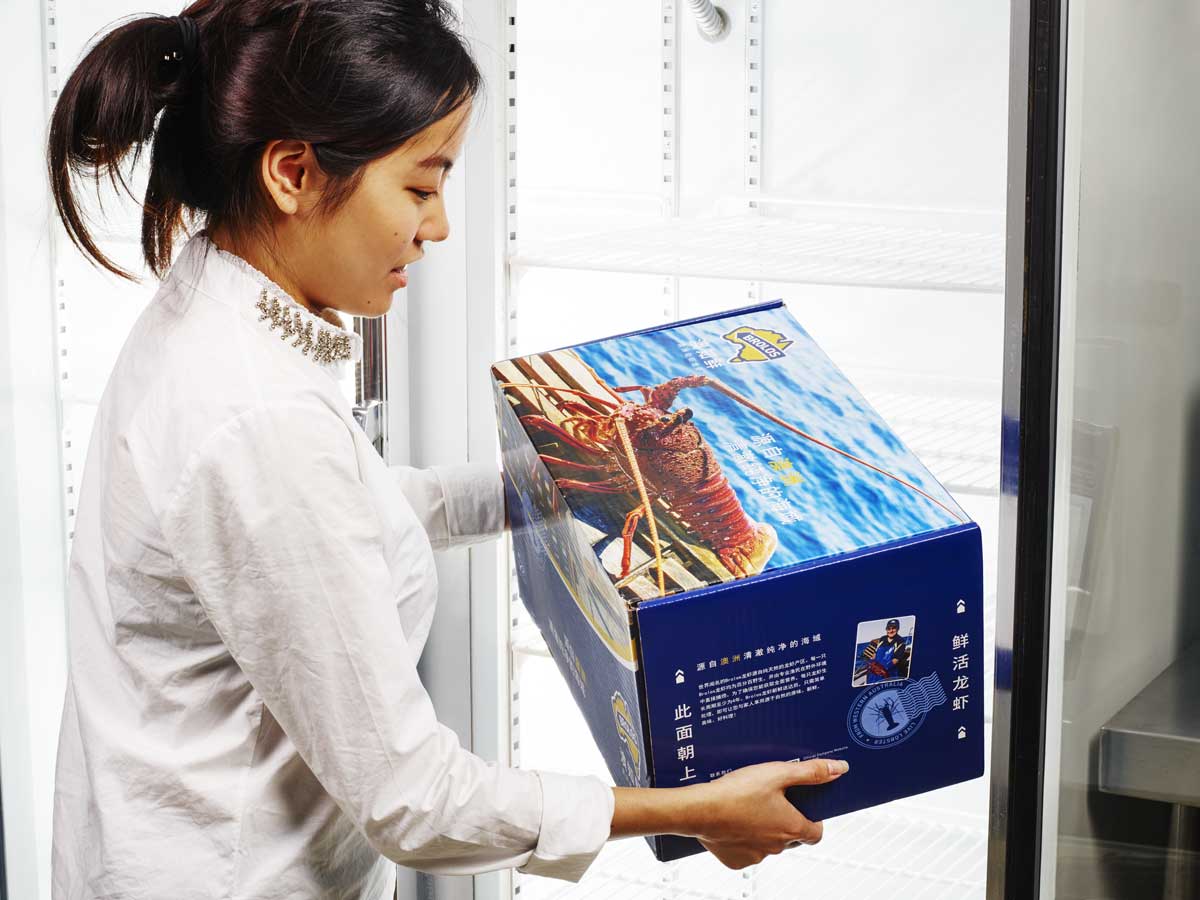
Brolos recommends that you leave the lobster in the netting/ packaging and chill in the fridge for at least 15 minutes before starting your preparation.
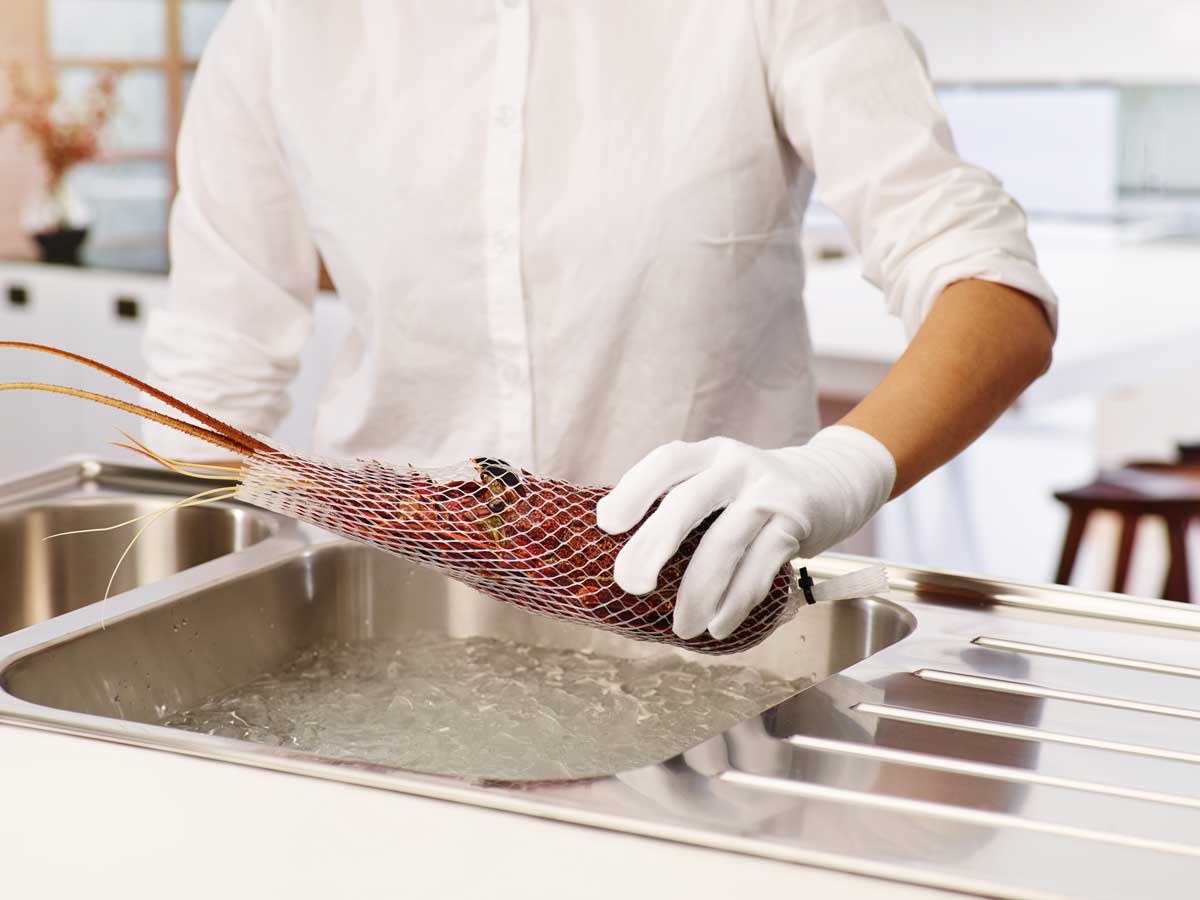
Alternatively you can chill the lobster in its netting by using ice and cold water in the kitchen sink – again for at least 15 minutes before you begin preparation.

Chilling is the humane way to slow down the metabolism and euthanize the lobster. This minimizes any messy handling or the chance of injury from the lobster. Once you have chilled the lobster – you can remove from the netting.
To ensure that your Brolos Rock Lobster arrives in the best possible condition at your home it has been placed in netting. This keeps the lobster relaxed and comfortable on the journey and prevents the risk of damage. Most importantly the netting makes it easier than ever to handle.
Removing the lobster from the netting is easy. For extra safety gloves are provided in the packaging. Everything has been thought of.
After chilling/ euthanizing, you are ready to remove the netting.
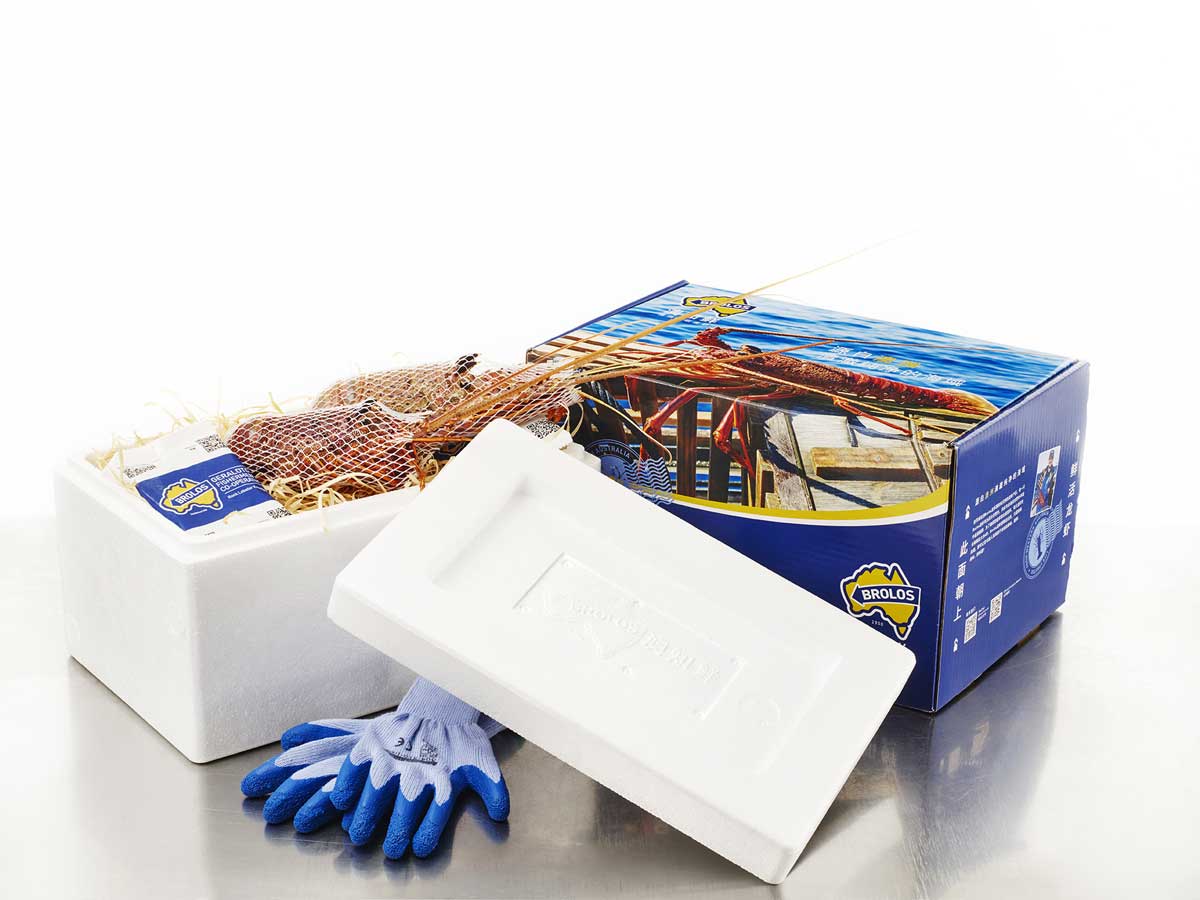
On a flat surface, cut the netting at the lobster’s tail near the plastic clip/ seal.
Turn the lobster upside down and ensure the tail is facing you.
Hold the lobster with one hand, and gently press the lobster tail with your thumb.
With your scissors or knife in your other hand, gently cut your way up the side of the tail to near the mid section of the lobster (side cut).
Once you have cut along the side to the mid-section, turn your scissors/ knife in toward the middle of the lobster and cut all the way along the under belly until the end of the netting.
(continued)
The netting will simple roll off the lobster now, and there will be no damage to the legs/ body of the lobster.
(animation)
To ensure that your Brolos Rock Lobster arrives in the best possible condition at your home it has been placed in netting. This keeps the lobster relaxed and comfortable on the journey and prevents the risk of damage. Most importantly the netting makes it easier than ever to handle.
Removing the lobster from the netting is easy. For extra safety gloves are provided in the packaging. Everything has been thought of.
After chilling/ euthanizing, you are ready to remove the netting.

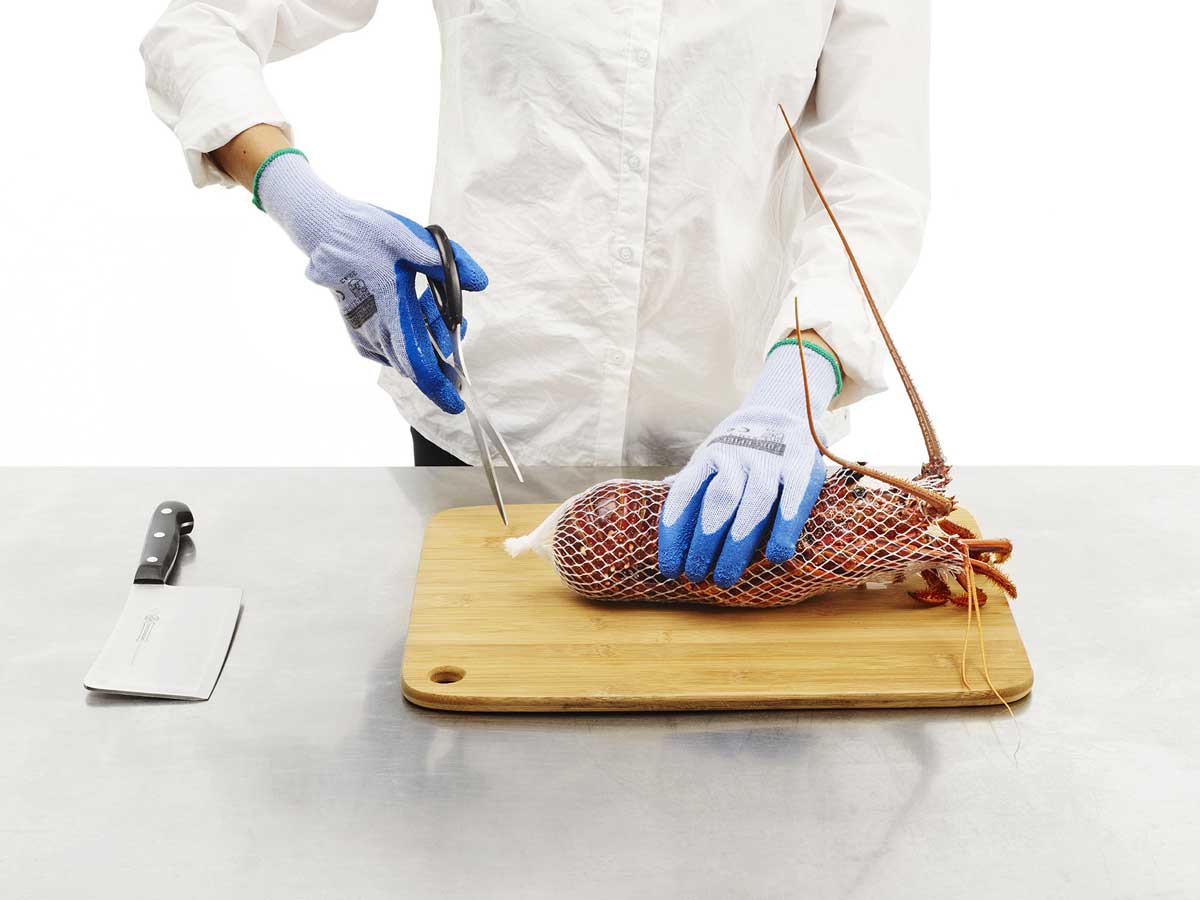
On a flat surface, cut the netting at the lobster’s tail near the plastic clip/ seal.
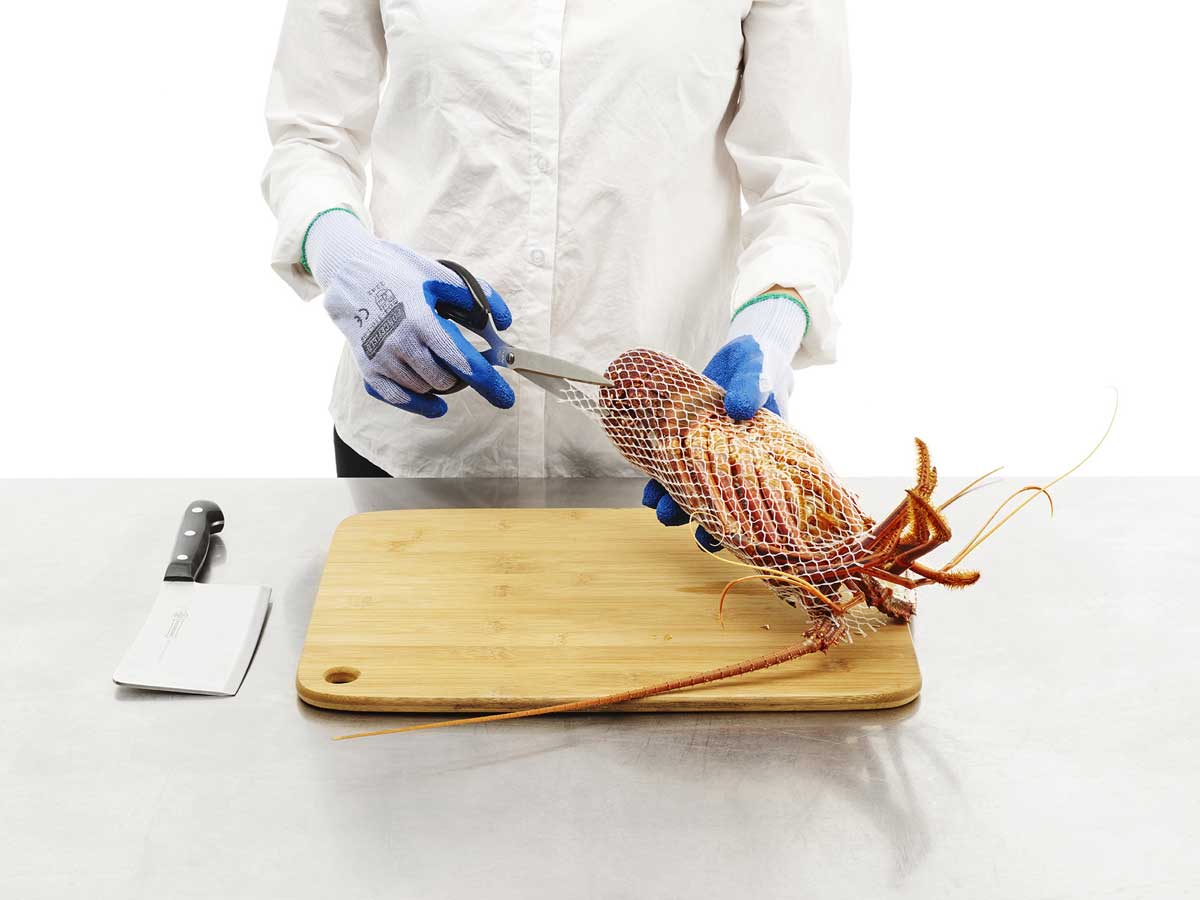
Turn the lobster upside down and ensure the tail is facing you.

Hold the lobster with one hand, and gently press the lobster tail with your thumb.
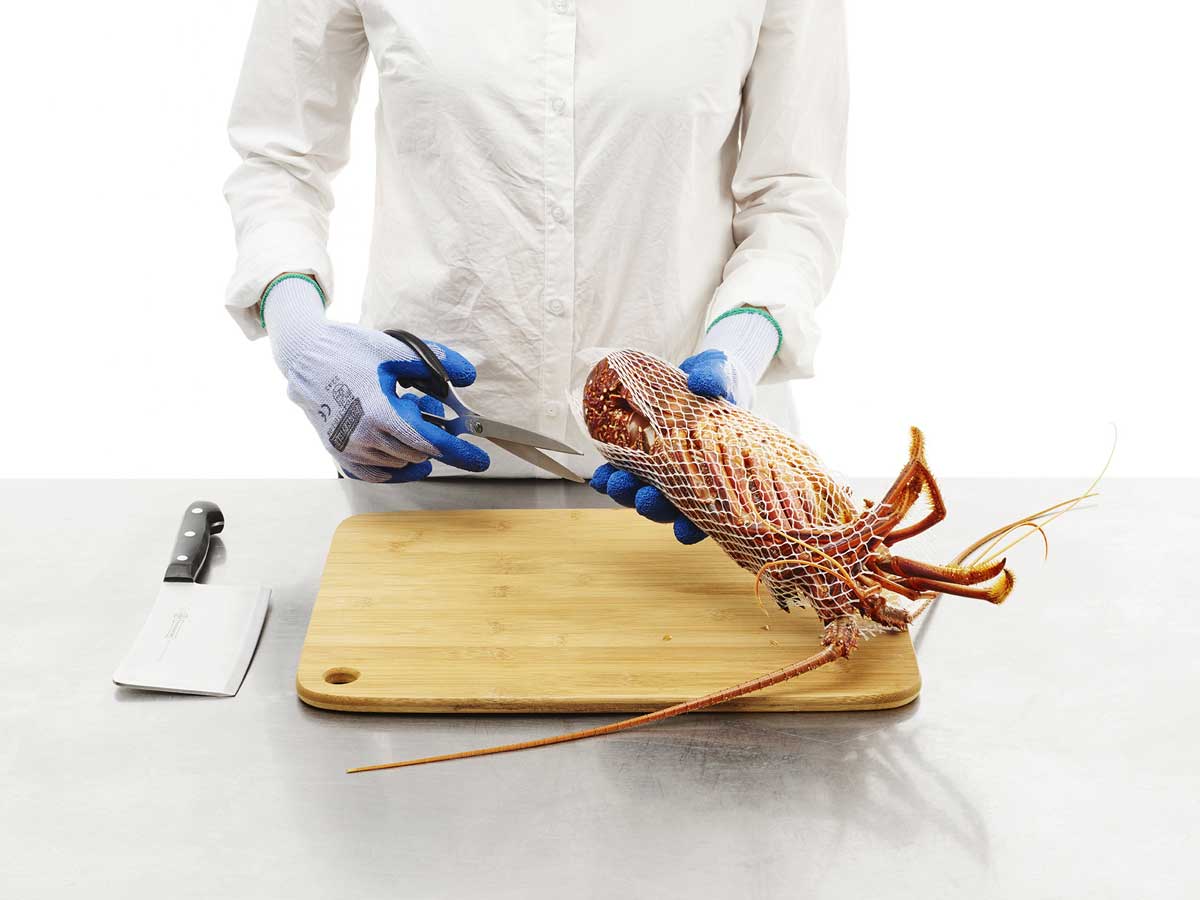
With your scissors or knife in your other hand, gently cut your way up the side of the tail to near the mid section of the lobster (side cut).

Once you have cut along the side to the mid-section, turn your scissors/ knife in toward the middle of the lobster and cut all the way along the under belly until the end of the netting.
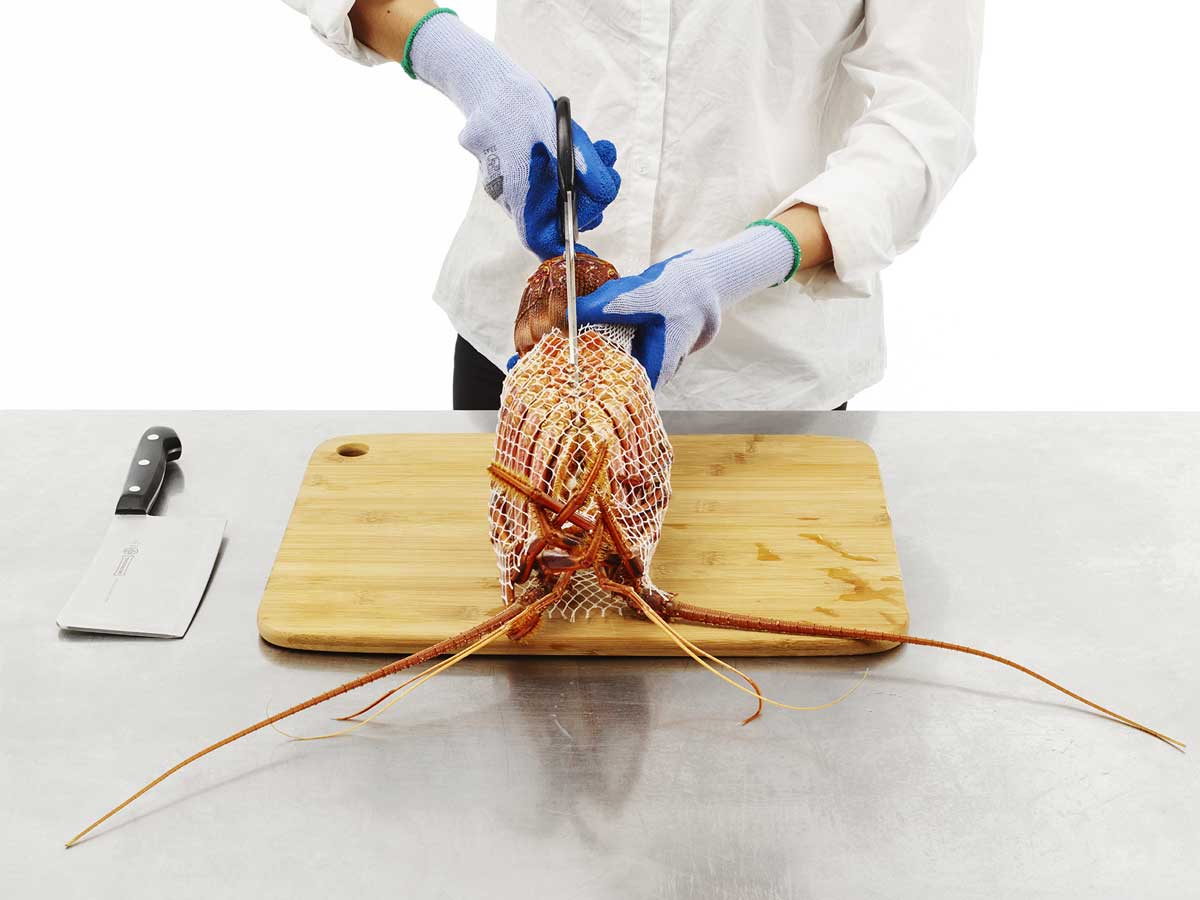
(continued)
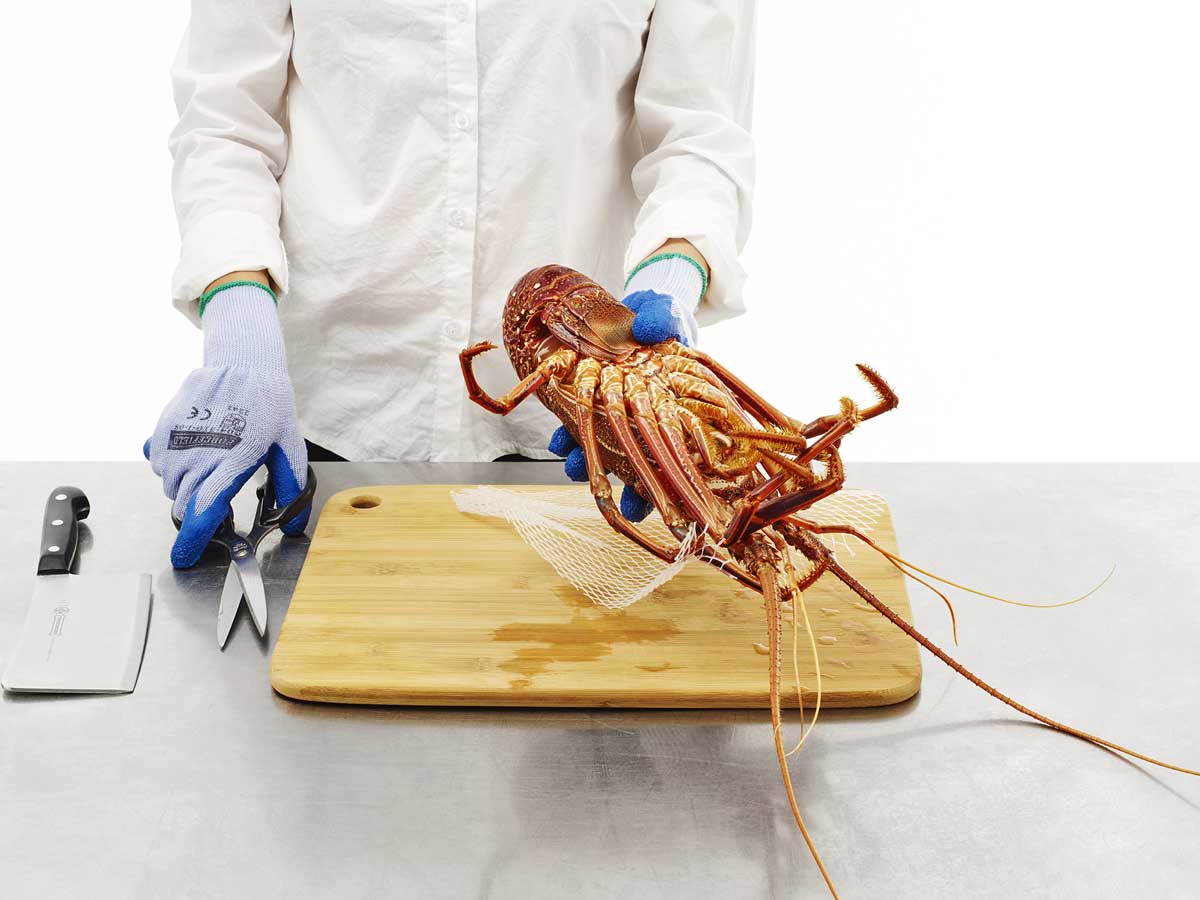
The netting will simple roll off the lobster now, and there will be no damage to the legs/ body of the lobster.
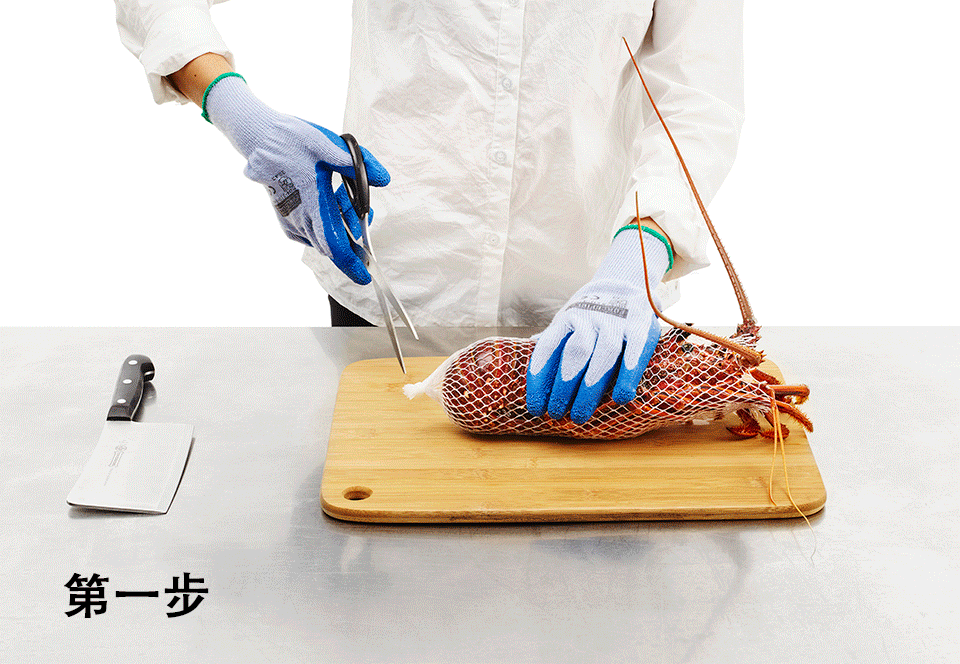
(animation)
Preparing a lobster is not something to be afraid of. Instead, think of it as part of the fun of having fresh lobster at home.
Before starting make sure you have a very sharp long bladed knife, sharp kitchen scissors and kitchen gloves.
Immobolise Lobster (if fresh): If preparing a raw lobster you want to make sure your lobster is immobile before you start. Make sure you follow the steps above to immobile the lobster and remove netting.
The first cut - split the head: Lay the lobster belly-down on a cutting board and insert a large sharp knife into the head section with the blade pointing forward. Press down firmly to split the head in half.
The second Cut – Split the body: Carefully re-insert the knife back into the head with the blade pointing towards the tail, then split the rest of the lobster in half. Press down firmly on the flat side of the knife to ensure the shell is cut through.
Open up: Gentle prise open the lobster taking care not to separate the head from the tail.
The final touch: Using the tomalley in your dish is a personal choice. If you do not wish to eat the tomalley, (the soft green flesh found in the head section), gently wash this area under running water to remove.
Preparing a lobster is not something to be afraid of. Instead, think of it as part of the fun of having fresh lobster at home.
Before starting make sure you have a very sharp long bladed knife, sharp kitchen scissors and kitchen gloves.
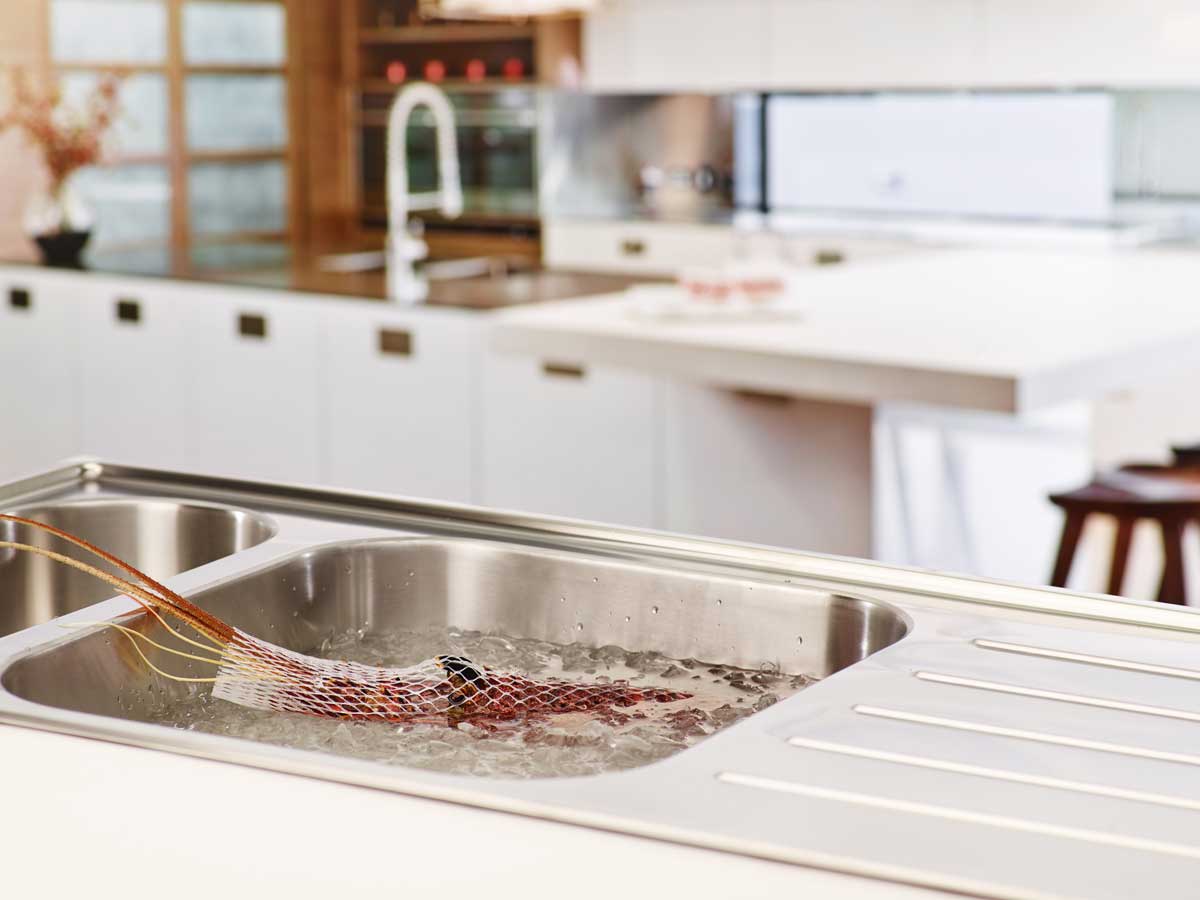
Immobolise Lobster (if fresh): If preparing a raw lobster you want to make sure your lobster is immobile before you start. Make sure you follow the steps above to immobile the lobster and remove netting.
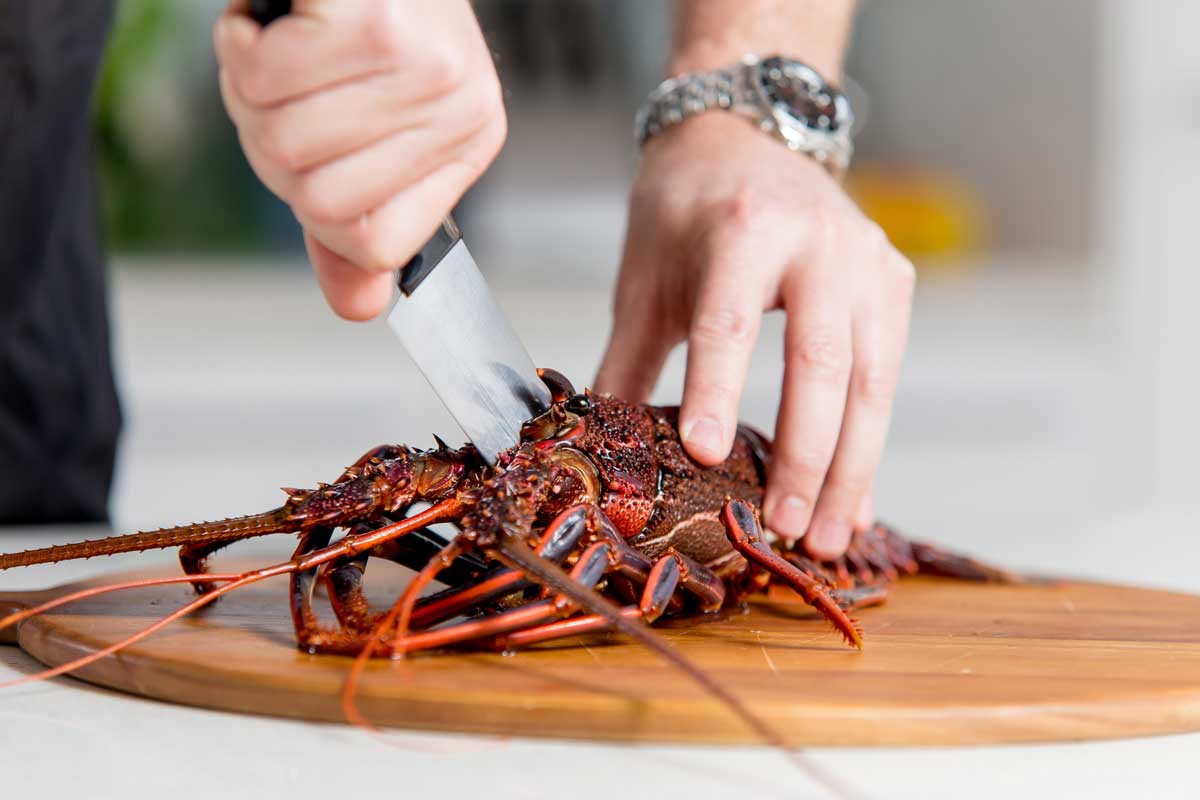
The first cut – split the head: Lay the lobster belly-down on a cutting board and insert a large sharp knife into the head section with the blade pointing forward. Press down firmly to split the head in half.
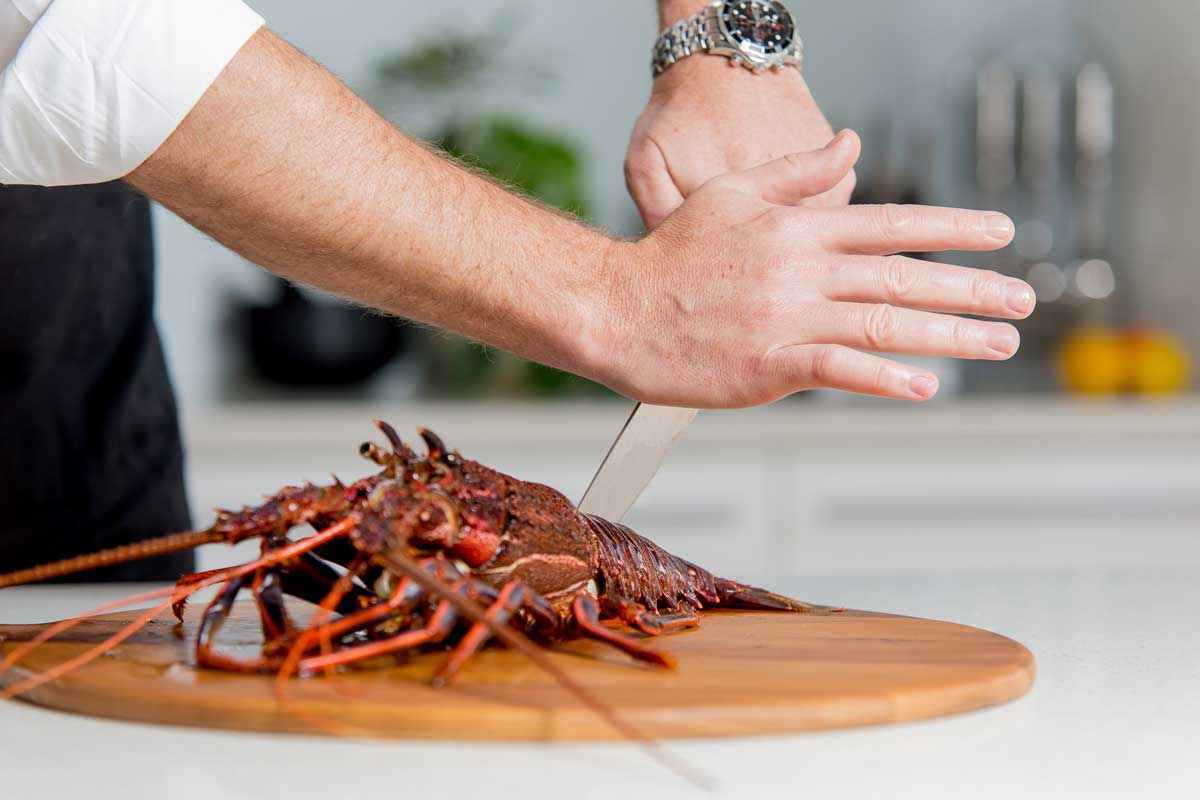
The second Cut – Split the body: Carefully re-insert the knife back into the head with the blade pointing towards the tail, then split the rest of the lobster in half. Press down firmly on the flat side of the knife to ensure the shell is cut through.
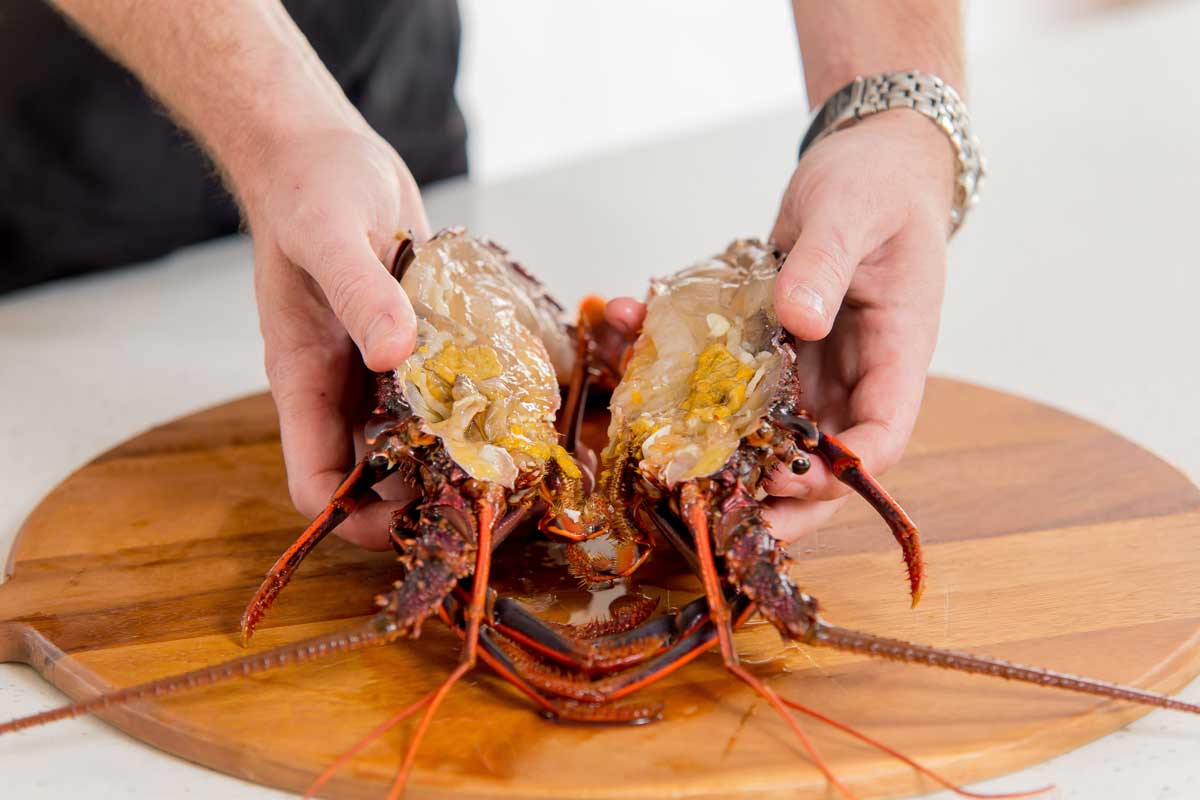
Open up: Gentle prise open the lobster taking care not to separate the head from the tail.
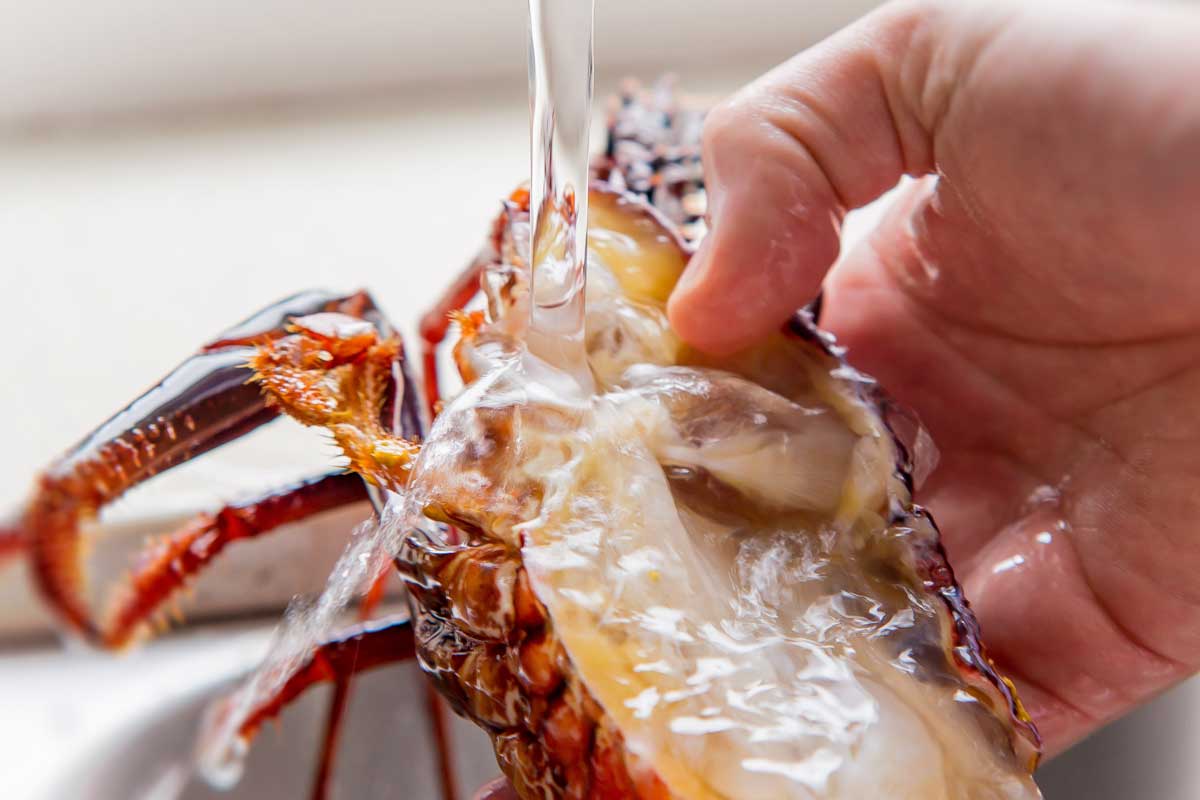
The final touch: Using the tomalley in your dish is a personal choice. If you do not wish to eat the tomalley, (the soft green flesh found in the head section), gently wash this area under running water to remove.
Brolos Lobster is tender, sweet, tasty and every single morsel counts. Below are some hints and tips to prepare boiled Brolos lobster and prevent wastage when removing cooked tail meat from it.

Boil water with a pot, and add about 17g sea salt per litre of water.
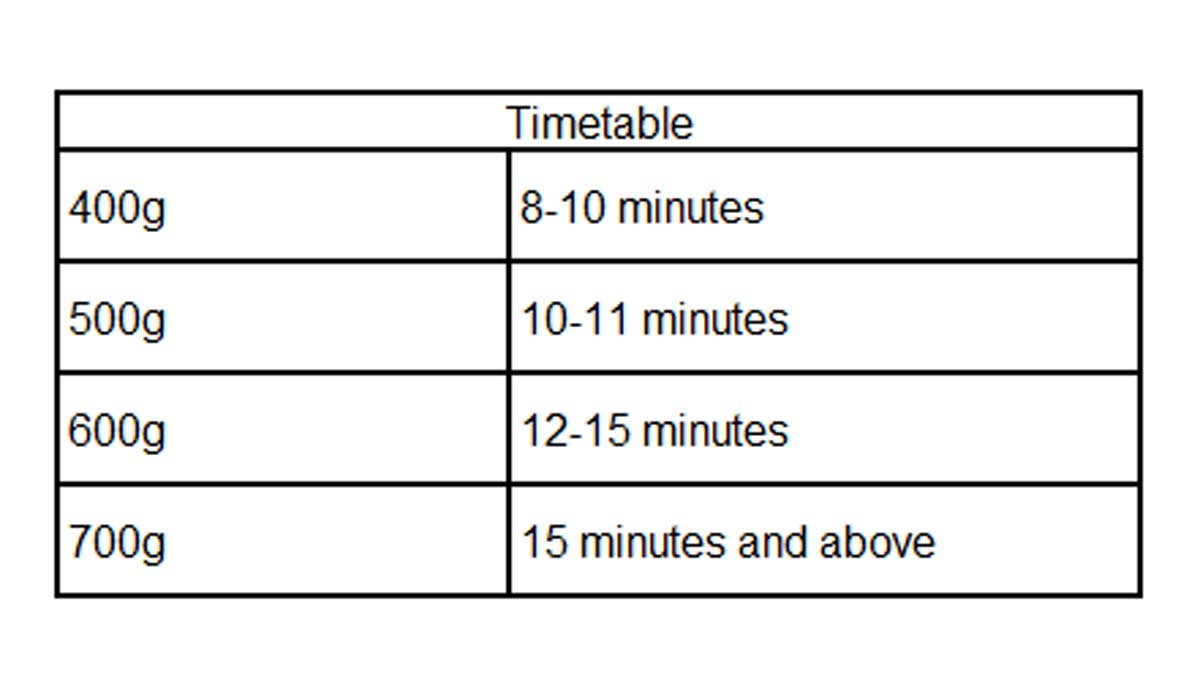
Put the lobster in and put the lid on. Please refer to below the timetable for different sizes of lobsters.

When the lobster is ready, the shell colour will be changed from the initial pink or dark red to bright orange or red.
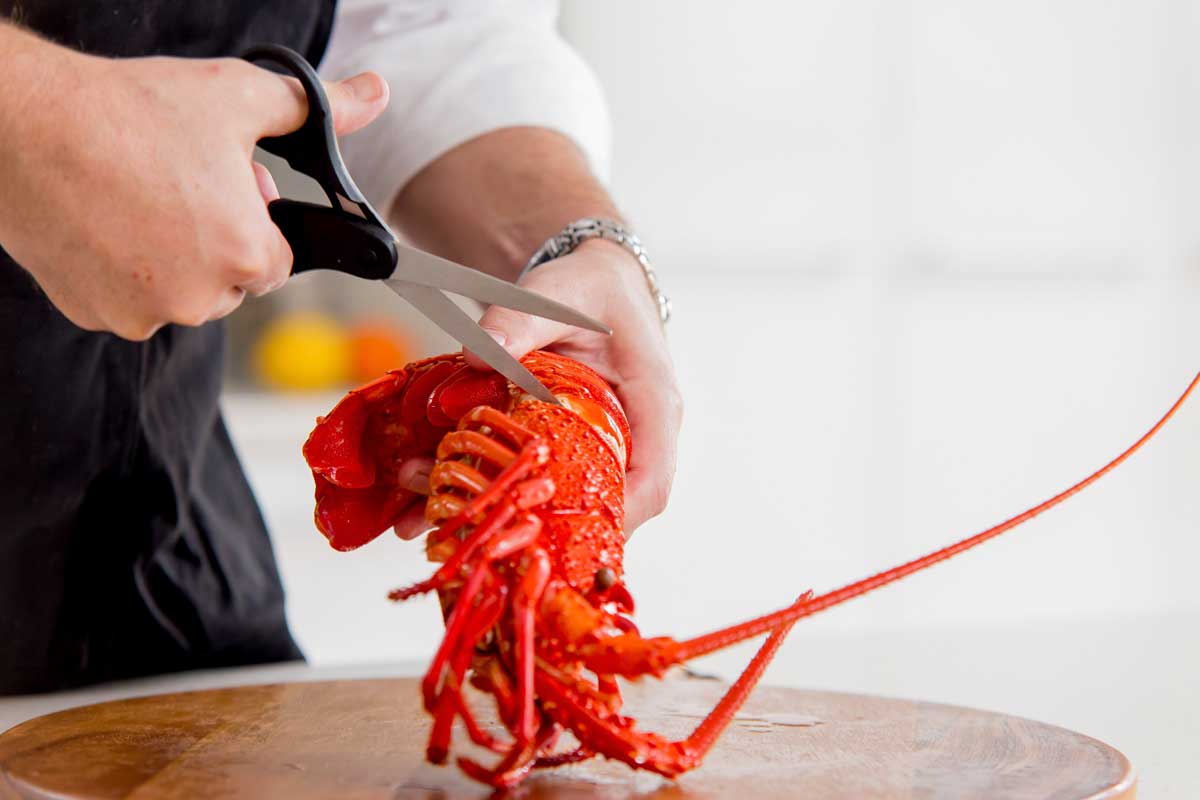
Separating the head from the body: First use scissors to cut off the lobster legs. Remove the head by cutting the seal on the neck of the lobster all the way around.
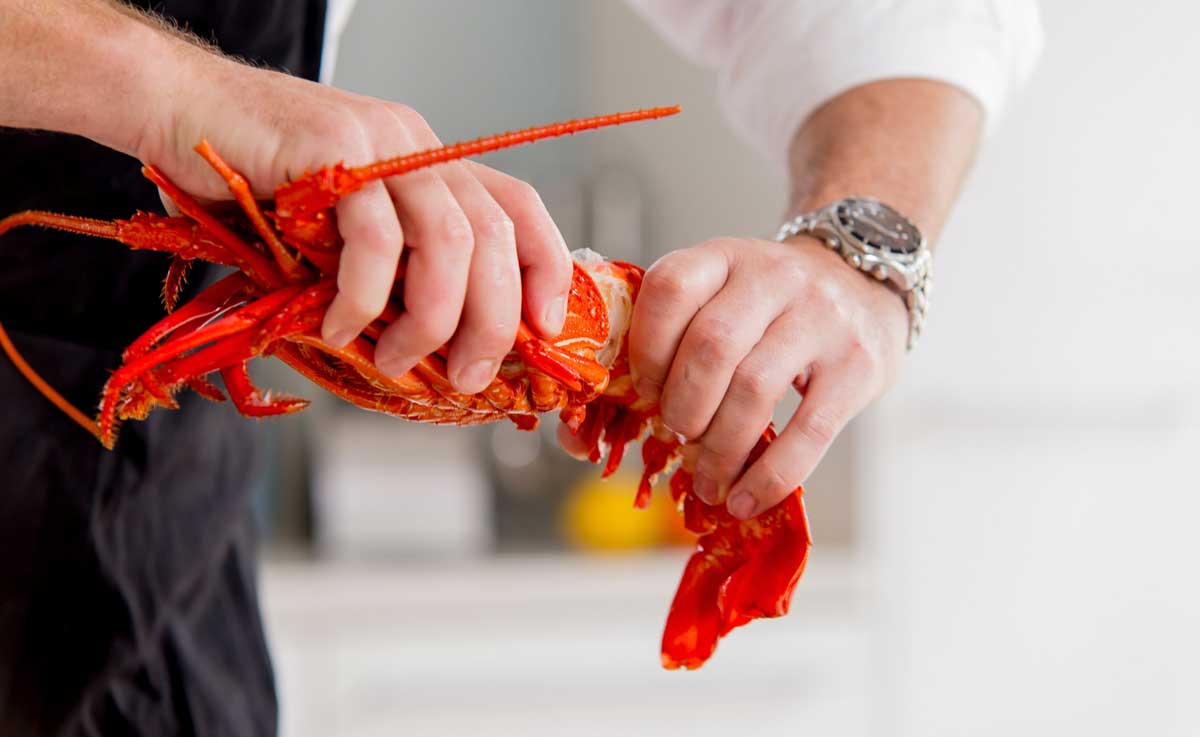
Removing the Tail: Hold the head and tail firmly in each hand and twist to remove the whole tail from the head. If you wish to use the tomalley you can now extract it from the head section.
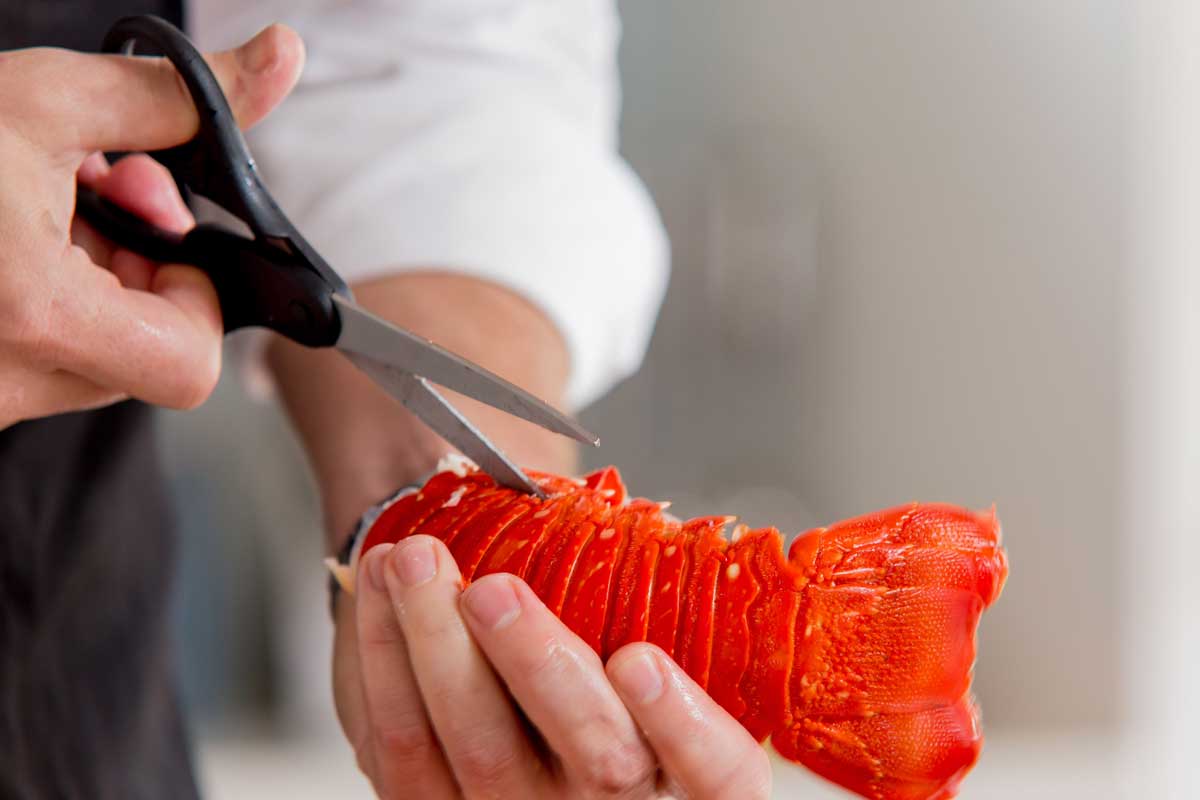
Cutting the tail open: To remove the tail meat from the shell, hold the tail firmly facing upwards. Using kitchen scissors, snip along both sides of the tail, cutting the hard shell as close as possible to where it joins the softer belly membrane. Gently remove the entire membrane section.
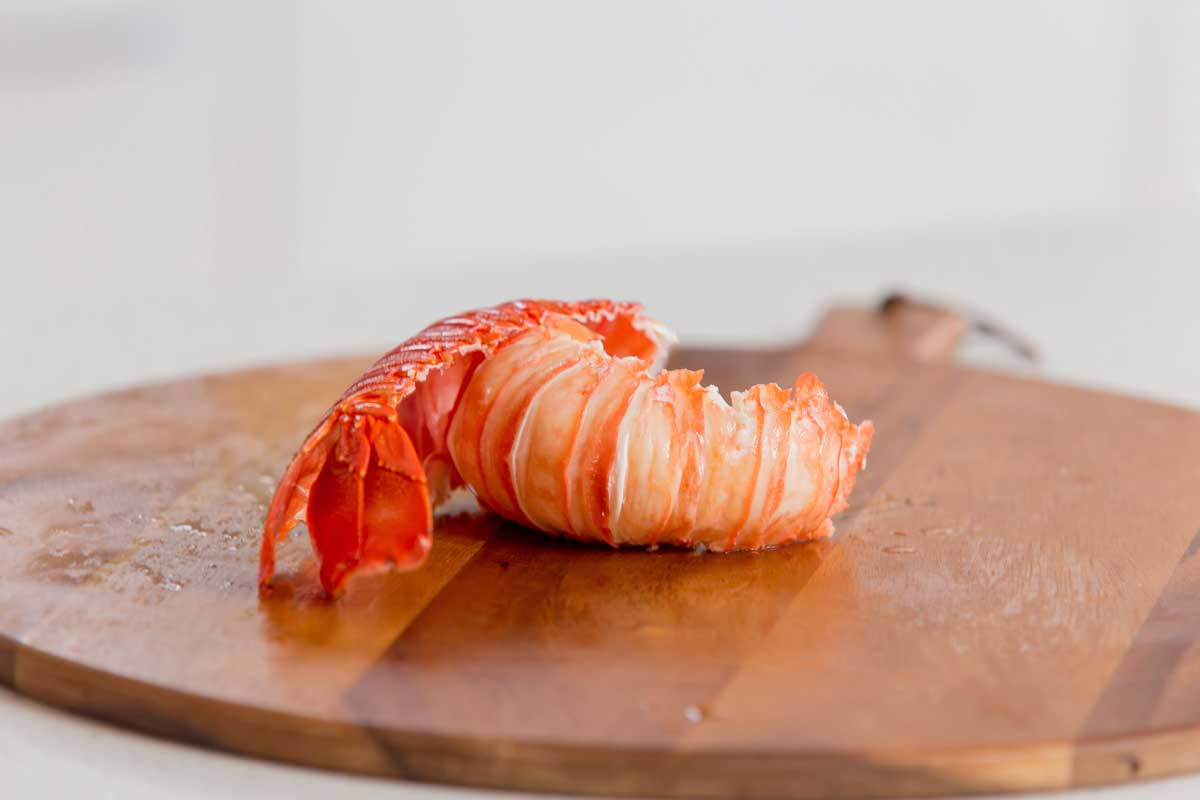
Removing the meat: Gently remove the meat from the tail in one piece, so that there is no wastage.
Brolos Lobster is tender, sweet, tasty and every single morsel counts. Below are some hints and tips to prepare boiled Brolos lobster and prevent wastage when removing cooked tail meat from it.
Boil water with a pot, and add about 17g sea salt per litre of water.
Put the lobster in and put the lid on. Please refer to below the timetable for different sizes of lobsters.
When the lobster is ready, the shell colour will be changed from the initial pink or dark red to bright orange or red.
Separating the head from the body: First use scissors to cut off the lobster legs. Remove the head by cutting the seal on the neck of the lobster all the way around.
Removing the Tail: Hold the head and tail firmly in each hand and twist to remove the whole tail from the head. If you wish to use the tomalley you can now extract it from the head section.
Cutting the tail open: To remove the tail meat from the shell, hold the tail firmly facing upwards. Using kitchen scissors, snip along both sides of the tail, cutting the hard shell as close as possible to where it joins the softer belly membrane. Gently remove the entire membrane section.
Removing the meat: Gently remove the meat from the tail in one piece, so that there is no wastage.